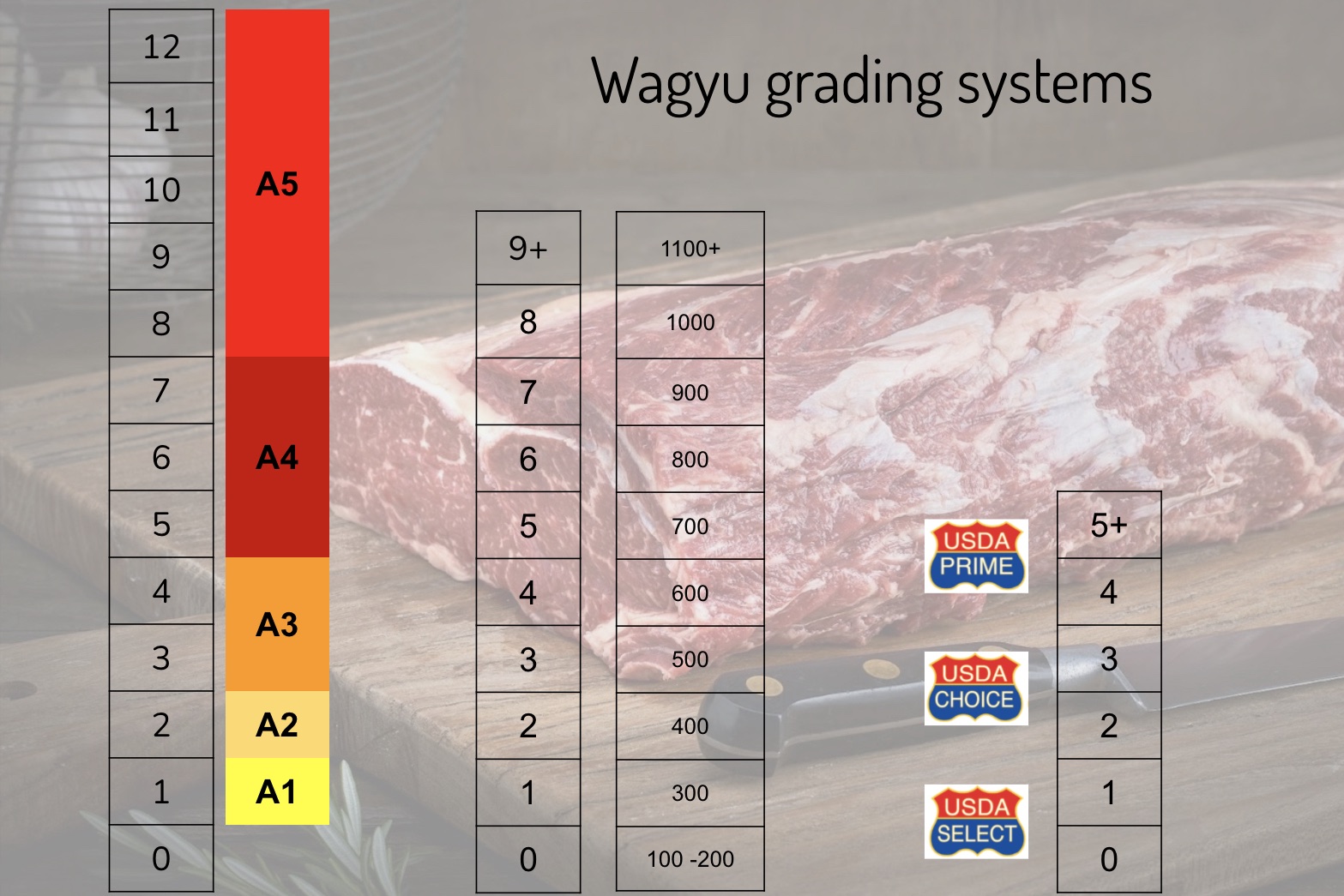All You Need to Know About Wagyu Grading Systems
7th February 2022
What is Wagyu Beef?
The most-prized wagyu is Japanese wagyu, which actually consists of four specific Japanese cattle breeds. For beef to be called “Japanese wagyu”, the cattle must be bred in Japan and have pure Japanese wagyu cattle bloodlines.
Beef bred in other countries can also be called wagyu. New Zealand producer
Firstlight started out with full-blood Japanese wagyu, but found breeding them with Angus and “Kiwi” (Friesian-Jersey) cows allowed them to thrive in the country’s grass-feeding farming practices. The result is an award-winning wagyu with a distinctive nutty, earthy taste, and a high level of marbling.
What is Marbling?
While all cows have intermuscular fat (ie fat between the muscles), wagyu beef metabolises fat within the muscle, resulting in that wonderful marbling we all love. It’s this marbling that makes wagyu so tender and juicy, and gives it its special flavour. Generally speaking, the greater the marbling, the more expensive it is.
Firstlight wagyu herds are special as they’re allowed to graze in green pastures their whole lives, just as nature intended. This unique diet produces finer galaxy-like marbling, which has a more subtle taste, rather than the thicker continuous shooting star-like streaks seen in grain-fed meat. It’s also higher in omega-3 and healthy monounsaturated fats compared to wagyu that consumes feed supplemented with grains.
So how do you know how much marbling your steak has? That’s where grading comes in. Certain wagyu breeds thrive in certain environments. To maximise quality, each country has developed its own cattle breeds to suit the natural conditions and farming styles, and has adapted its grading systems accordingly.
Japanese Grading System
The Japanese grading system consists of a letter from A (highest) to C, denoting yield, followed by a number from 1 to 5 (highest), indicating quality. To come up with the quality score, the meat is first inspected for four factors: the beef marbling score (BMS), which indicates the amount of marbling; meat colour; meat firmness and texture; and fat quality. All four factors are first scored from 1 to 5, and the lowest of those four scores is taken to be the quality score. So an A3 grading means the specimen has a high yield, and is of quite good quality (but has scored 3 on at least one of the four supplementary quality factors).
Australian and New Zealand Grading System
Wagyu from Australia and New Zealand are assessed using the AUS-MEAT system. It’s very similar to the Japanese beef marbling score, with scores ranging from 0 to 9 (highest). A newer system in Australia is the Meat Standards Australia (MSA). This is a more complex standard ranging from 100 to 1100+, and tests for a variety of characteristics like meat colour, marbling, fat depth, carcass weight and pH.
American Grading System (USDA)
The American grading system is overseen by the United States Department of Agriculture (USDA), and applies to all beef breeds (ie not just wagyu). It’s easier to understand as it consists of just three grades: prime (highest), choice and select. However, it doesn’t provide as much information as other systems, especially regarding the amount of marbling. So a USDA Prime specimen could have a marbling score anywhere from 5 to 9 (or even up to 12).
We’ve put together a handy chart below to help you compare different wagyu systems. The table is based on a graphic from
Meat N’ Bone.

